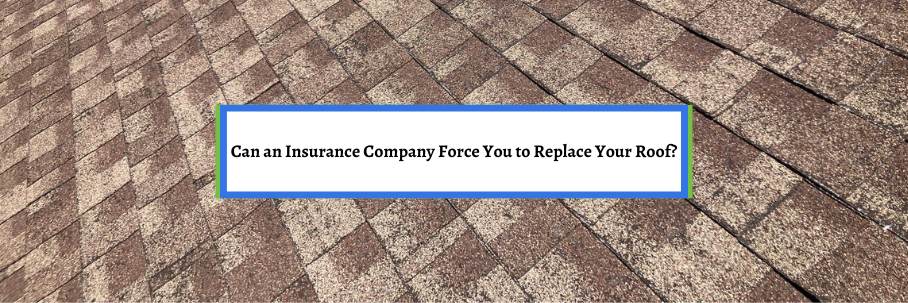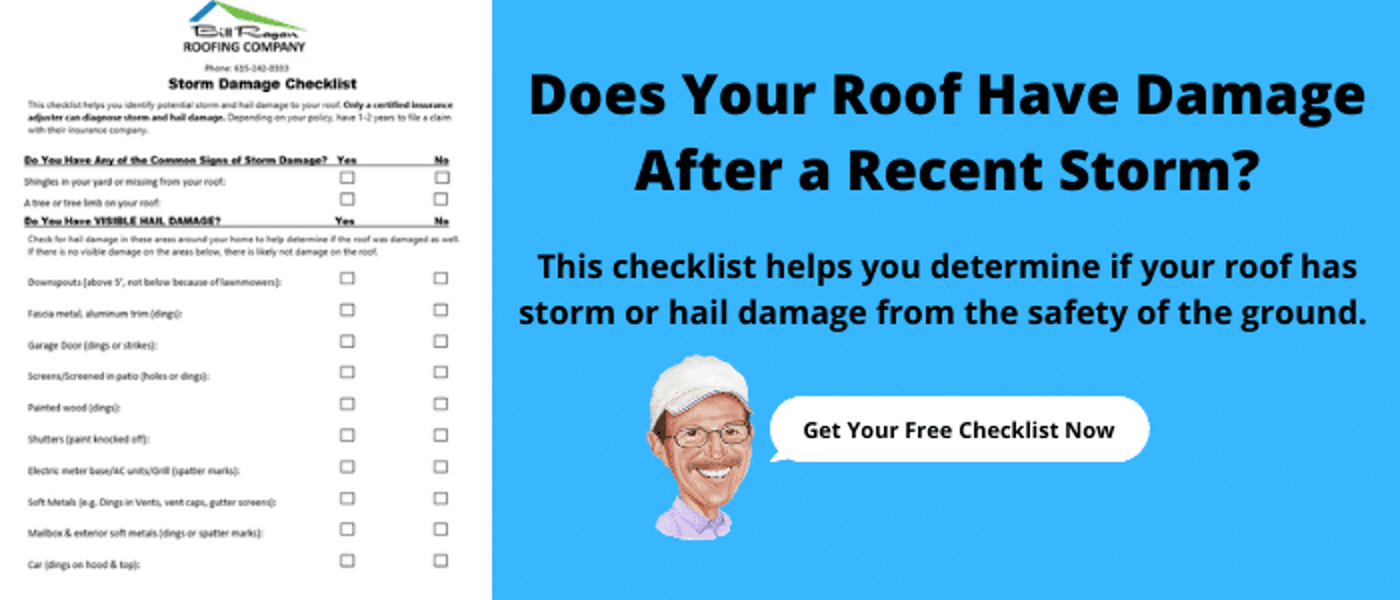Can an Insurance Company Force You to Replace Your Roof?

Do you have an older roof that was damaged after a storm? Have you heard the recent stories about insurance companies taking away coverage until a roof is replaced?
This is a growing concern in the roofing industry right now. With the increase in damaging storms around the country, insurance companies are becoming stricter and making some big policy changes.
But does this mean insurance companies are actually forcing homeowners to replace their roofs? Let’s break it down.
For over 30 years, Bill Ragan Roofing has taken pride in guiding homeowners through the confusion and frustration that plagues the industry. Now, I’ll help you understand what you need to know about insurance companies making homeowners replace roofs.
By the end of this article, you’ll have the answers to the following questions:
- Can an insurance company force you to replace your roof?
- Why are insurance companies forcing homeowners to replace their roofs?
- Can you do anything to avoid being forced to replace your roof?
Can an insurance company force you to replace your roof?
Yes, an insurance company can force you to replace your roof. Recently, they have started canceling or withholding coverage if the roof is in bad shape or too old.
This is especially true for roofs over 20 years old or with an inferior shingle (mainly 3-tab) installed. 3-tab shingles are very susceptible to hail and wind damage, so insurance companies are limiting coverage (if any).
If this happens, they can exclude roof damage from the policy completely until the roof is replaced. In worst-case scenarios, a complete policy renewal could hinge on getting a new roof.
Why are insurance companies forcing homeowners to replace their roofs?
Insurance companies are forcing roof replacements mainly because they don’t want to assume the risk of an older roof. They just don’t want to be responsible for a roof that needs replacing in the near future.
On top of this, homeowners in the past needing a new roof have waited until a storm hits to get one through insurance. While this wasn’t a problem, recent weather trends have increased insurance claims and led to heavy losses.
Insurance companies are now tightening coverage options, limiting payouts, and denying obvious claims. Another reason why insurance companies are forcing roof replacements is because many homeowners neglect their roof.
This gives them an easy out by saying the roof wasn’t “maintained” to the standards required for continued coverage. Unfortunately, claims being rejected or having coverage canceled due to neglect is becoming more common.
Is there anything you can do to avoid being forced to replace your roof?
There’s no guarantee you can avoid the insurance company forcing you to replace your roof, especially if it’s on the older side. However, you can do a few things to reduce the chances.
Maintain your roof
Roof maintenance plays a crucial role in how long a roof lasts and ages. Whether once or twice a year, it ensures a roof reaches its full potential.
Maintenance catches any problems before they become leaks and clears sitting debris that shortens the lifespan if left to sit for too long. Preventing leaks and maximizing a roof is one thing, but it also keeps everything fully functioning as the years pass.
So, regularly maintaining your roof reduces the chances insurance will withhold coverage or force you to replace your roof. This is simply because the roof has been taken care of throughout its life, which is less risky for the insurance company.
Invest in a high-quality roof
The quality of the roofing material, components, and installation has a huge impact on a roof’s lifespan. A properly installed roof with a durable material lessens the chances of being forced to replace your roof.
The insurance company is more likely to offer continued coverage on a 20-year-old architectural shingle roof than a 15 to 20-year-old 3-tab shingle roof. However, you can also invest in a material with a high impact resistance rating.
Any roofing materials with a Class 3 or Class 4 impact rating stand up well to hail. So, insurance companies are happier to continue covering a roof that’s less likely to experience damage.
In fact, some insurance companies even offer incentives if you install a material with a high impact rating.
Consider not filing a claim on an older roof
If you have an older roof (around 20 years), you need to consider if filing a claim is worth the potential risk of being forced to replace it. While insurance can look at information to determine the roof’s age, it’s very uncommon to get a random physical inspection.
So, the insurance company won’t necessarily know your roof’s condition until you file a claim and an adjuster performs an inspection. There’s a chance that an adjuster just denies your claim, but they can also deny it and force you to replace it after reviewing everything.
This has become more common with homeowners waiting for an insurance payout to replace their roof. But once you start the claim process, there’s a risk insurance comes back and says you must replace the older roof after their inspection.
What should you do if your roof has storm damage?
After reading this article, you know that insurance companies can force you to replace your roof, why, and the things you can do to reduce the risks. Unfortunately, this is becoming more common in the United States as weather patterns continue to get more severe.
Every insurance company is different, so there’s no guarantee that you’ll be forced to replace your roof. And as long as you invest in maintenance and have a quality roof system, you reduce the risk.
However, you won’t know until you start the claim process, which is why you should keep all this in mind if you have an older roof. Even so, you need to be prepared if your roof gets damaged.
The insurance process is confusing, so knowing what to do before filing is crucial. That’s why I wrote another article breaking it down.
Check out 5 Things to Do If Your Roof Has Storm Damage to learn what every homeowner should do when their roof gets damaged by hail or wind.


